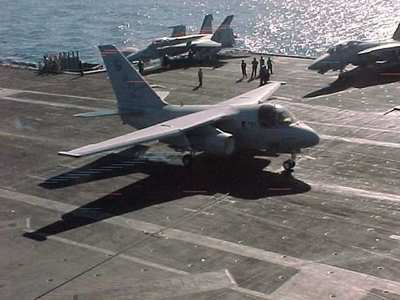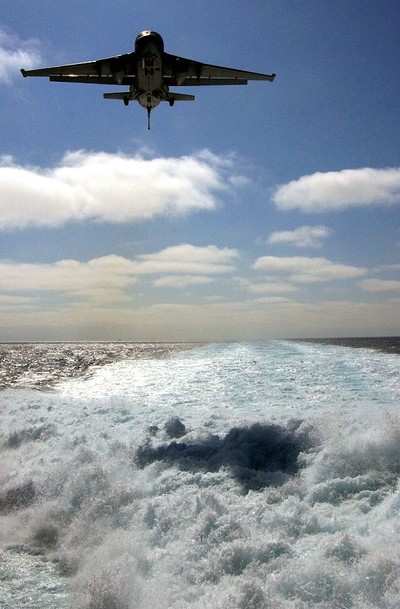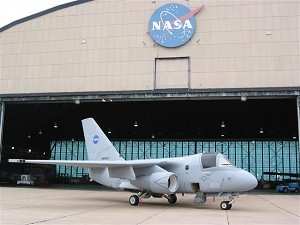Carrier-Based Multi-Mission Aircraft Completes 35-Year
Career
The US Navy retired the last Lockheed Martin S-3 Viking from
fleet service in ceremonies at Naval Air Station Jacksonville
Friday morning, closing out the aircraft's distinguished 35-year
Naval career.

Development of the S-3 began in August 1969, and first flight
occurred on January 21, 1972. Sea Control Squadron 41 (VS-41), the
S-3 training unit known as the Shamrocks and the first operational
S-3 unit, received its first aircraft in February 1974. A total of
187 S-3s were built (eight test and 179 operational aircraft)
between 1971 and 1978. Over its career, the Viking served with 18
Navy squadrons and accumulated approximately 1.7 million flight
hours.
"The S-3 Viking was known as the 'Swiss Army Knife of Naval
Aviation' and served the US Navy well in a wide variety of roles
over the course of its operational service life," said Ray Burick,
Lockheed Martin vice president of P-3/S-3 programs. "The Viking has
played a critical role in carrier-based anti-submarine and
anti-surface warfare, as well as overland operations, refueling,
targeting, and electronic surveillance. And of course Lockheed
Martin is proud of the role it will continue to play in support of
these critical Navy carrier-based missions, as many of these
missions will eventually be carried out by the F-35C Lightning
II."

The first S-3 was built at the then-Lockheed Aircraft Co. plant
in Burbank, CA and was trucked to the company's facility in
Palmdale for first flight. Company pilots John Christiansen and
Lyle Schaefer were at the controls, kicking off a 26-month test
program. Among its notable firsts, the S-3 was the first
antisubmarine warfare (ASW) platform to have a computerized
acoustic system.
Sea Control Squadron 29 (VS-29), known as the Dragonfires, made
the first S-3 deployment aboard the USS John F. Kennedy (CVN-67) in
July 1975. The S-3 fleet surpassed 100,000 flight hours less than
two years after that first deployment.

Several variants of the S-3 carried out a range of missions for
the US Navy. Seven aircraft were modified to US-3A Carrier Onboard
Delivery aircraft, capable of carrying 4,250 lbs. of cargo. The
ES-3A Shadow was designed for fleet electronic surveillance,
replacing the EA-3B. Sixteen aircraft were modified to ES-3A
configuration, and the first mission capable Shadow flew in May
1991. Development of a KS-3A tanker variant began in 1979; although
the KS-3A was never produced, it did prove the concept of "buddy
tanking" (aerial refueling using a wing-mounted pod), which most
S-3s later performed. At the height of combat operations during
Operation Iraqi Freedom, S-3 crews transferred nearly eight million
pounds of fuel to Coalition aircraft.
The significantly improved S-3B was developed in the early 1980s
to better detect quiet Soviet submarines, identify targets and
carry standoff weapons. The S-3B flew for the first time in
prototype form in September 1984. During Operation Iraqi Freedom,
an S-3B from VS-38, the World Famous Red Griffins, carried out the
first S-3 attack mission, disabling Saddam Hussein's ocean-going
yacht with a laser-guided Maverick air-to-surface missile. In 2003,
an S-3B from VS-35 became the first aircraft ever to have the Navy
One call sign when it carried former President George W. Bush to
the USS Abraham Lincoln (CVN-72).

"The S-3 Viking will long be remembered for its mission
capability, its flexibility and its reliability," said Burick. "The
aircraft has served the US Navy admirably for more than three
decades. We salute all who have flown and supported the
Viking."

The NASA Glenn Research Center near Cleveland, OH currently has
four S-3B Vikings, performing aircraft icing research missions. It
is likely that four S-3Bs will remain in Navy service, although in
a support role providing range surveillance at the Naval Air
Warfare Center Weapons Division at Point Mugu, CA.
 SpaceX to Launch Inversion RAY Reentry Vehicle in Fall
SpaceX to Launch Inversion RAY Reentry Vehicle in Fall Aero-News: Quote of the Day (04.23.24)
Aero-News: Quote of the Day (04.23.24) Aero-News: Quote of the Day (04.20.24)
Aero-News: Quote of the Day (04.20.24) ANN's Daily Aero-Linx (04.20.24)
ANN's Daily Aero-Linx (04.20.24) Aero-News: Quote of the Day (04.21.24)
Aero-News: Quote of the Day (04.21.24)







